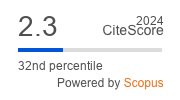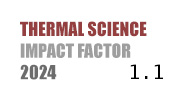THERMAL SCIENCE
International Scientific Journal
Authors of this Paper
External Links
FLOW FIELD CHARACTERISTICS OF ULTRA-HIGH PRESSURE POST-MIXED ABRASIVE WATER JET APPLIED FOR NON-EXPLOSIVE TUNNEL EXCAVATION
ABSTRACT
Ultra-high pressure abrasive water jet (AWJ), as a non-explosive tunnel excavation method, is proposed to reduce the impact on surface resident and other environmentally sensitive areas. In this paper, we carried out multi-phase simulation analysis of AWJ flow field based on Euler model to optimize the operation parameters of the post-mixing AWJ under the dual constraints of jet velocity and abrasive consumption. The characteristics of sand mixing in the nozzle, the evolution of the flow field and abrasive consumption under ultra-high pressure were obtained and analyzed. Considering the joint constraints of jet velocity and abrasive consumption, the operation parameters were optimized and recommended for tunnel contour cutting. This study is expected to provide theoretical and engineering guidance for future application of high pressure AWJ non-explosive tunnel excavation.
KEYWORDS
PAPER SUBMITTED: 2024-09-20
PAPER REVISED: 2024-10-10
PAPER ACCEPTED: 2024-11-10
PUBLISHED ONLINE: 2025-05-03
DOI REFERENCE: https://doi.org/10.2298/TSCI2502131Y
CITATION EXPORT: view in browser or download as text file
2025 Society of Thermal Engineers of Serbia. Published by the Vinča Institute of Nuclear Sciences, National Institute of the Republic of Serbia, Belgrade, Serbia. This article is an open access article distributed under the terms and conditions of the Creative Commons Attribution-NonCommercial-NoDerivs 4.0 International licence

